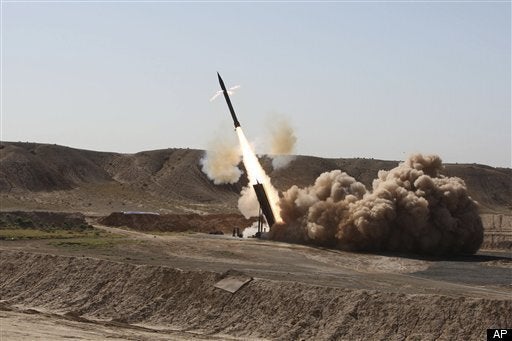
Surprisingly, besides agreeing on further meetings before the end of the month, the "Geneva Talks 2" resulted yesterday in a significant step forward, namely the storage abroad of most low-enriched uranium (LEU) produced so far by the Iranian centrifuges. The Obama negotiating team had the foresight to ask Iran to do so at an early stage of the negotiations, thereby confirming both its willingness to engage Iran constructively and its determination to be tough on the essential aspects of the Iranian nuclear threat. The move was brilliant.
Why is this important? Because low-enriched uranium (some 4% enriched) is already a long way towards the weapon-relevant highly-enriched uranium (some 90%), much more than these two figures seem to indicate. In the physics of enrichment, it's like a pre-cooked cake, so well pre-cooked that a few minutes in the micro-oven suffices to bring it to the table. This has been called the "breakout scenario" -- getting enough pre-cooked uranium openly under the eyes of the International Atomic Energy Agency, before kicking the inspectors out of the country and rushing to produce highly-enriched uranium.
For the time being, this shipment to Russia of the stockpile of LEU eliminates the breakout risk. Some would argue that Iran would only send to Russia part of its LEU stockpile and keep hidden any past clandestine production of LEU. Not so easy. The IAEA would indeed detect such dissimulation, having kept track over time of the some 350 tonnes of raw uranium that Iran had purchased from Namibia in the seventies.Why would Iran accept shipping their LEU abroad? Politically, it seems that they have decided to counter Western concern in the short term, without losing ownership of the material in the long-term. Iran would keep title to the LEU, but the material would be beyond Iranian reach. Formally, Iran would simply purchase from Russia fabricated reactor fuel bundles for their own reactors - first for the Tehran research reactor, later for power plants - making use of their own LEU. The LEU should of course be shipped immediately to the fabricator, and stored there until fuel manufacturing.
The Tehran research reactor was built in the sixties by an American company (General Atomics of San Diego), fuelled at the time with highly-enriched uranium. Yes highly-enriched, bomb-grade uranium! In 1993, the depleted original fuel was substituted with low-enriched uranium supplied by Argentina. This last batch of fuel would thus be replaced by Russian fuel at the end of 2010.
Having the low-enriched uranium shipped to Russia in the very near future is a major achievement for the Obama Administration, and a significant gesture of good will on the part of Iran. This arrangement plugs the uranium channel to nuclear weapons for several years. The other channel -- that of plutonium -- should also be taken care of rather sooner than later. The Iranians have made progress in the construction of an Isotope Production Facility at Arak using a "heavy water reactor", a reactor design that can produce good quality plutonium. To reduce international proliferation concerns, the core of the reactor should be replaced by a less proliferating "light‐water design". This change would not affect the value to Iran of a facility needed for isotope production and many peaceful applications of nuclear technology. Hopefully, this possibility should come soon on the agenda of the Geneva Talks.